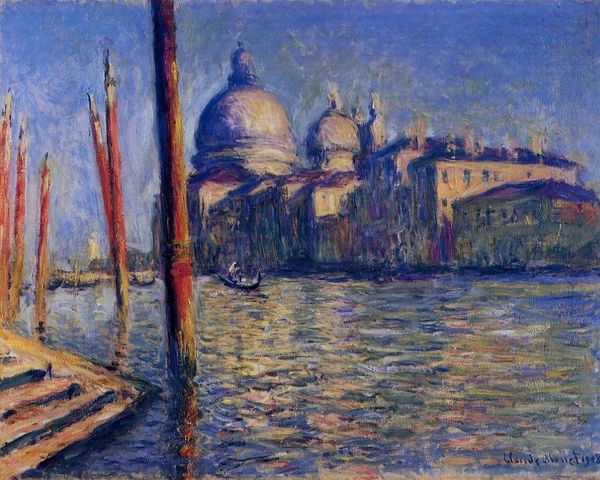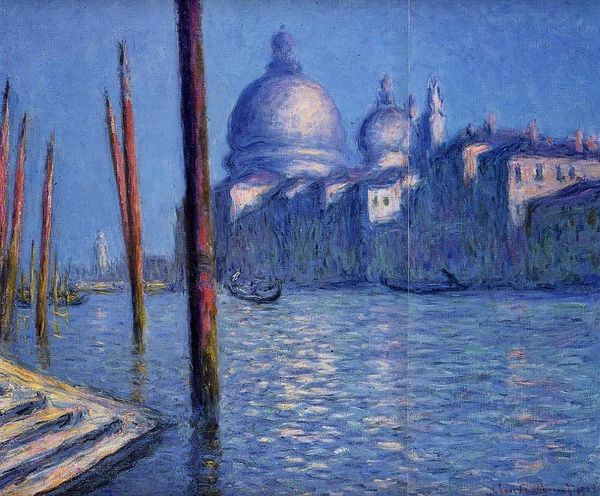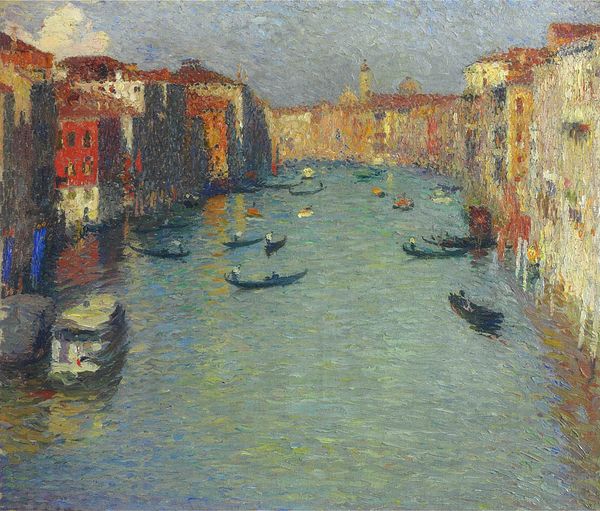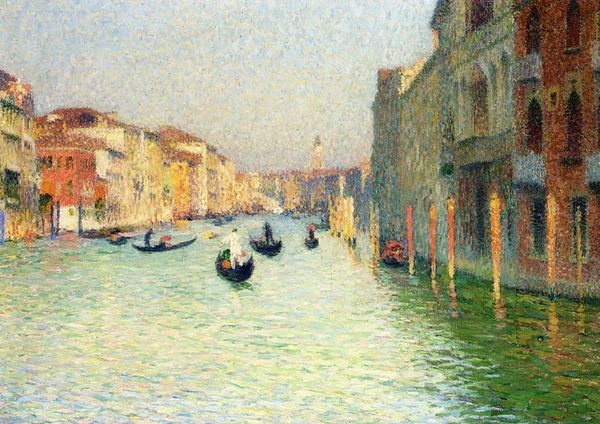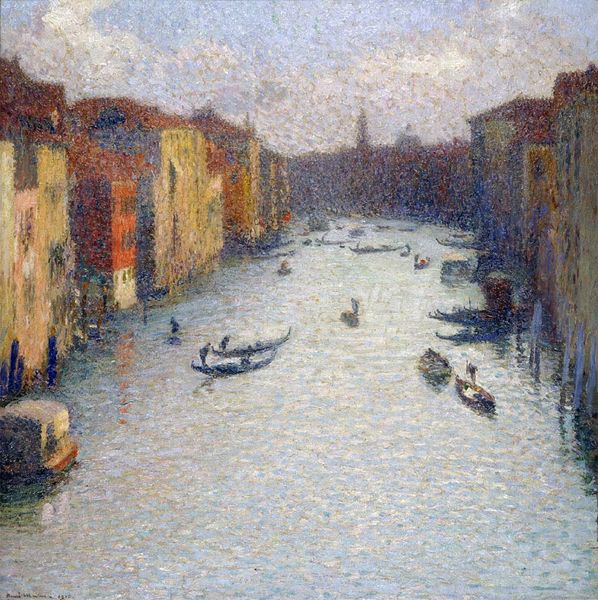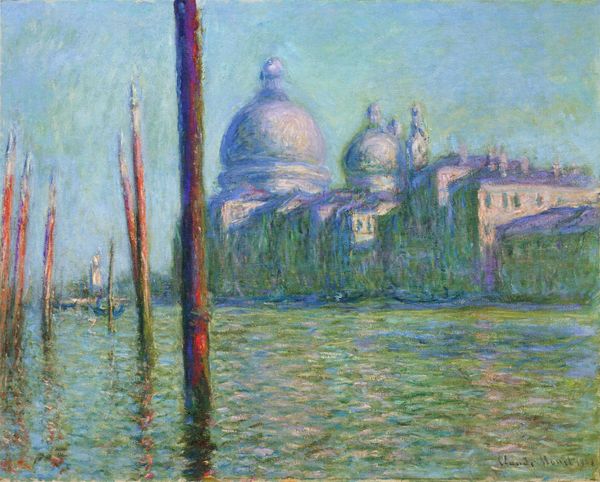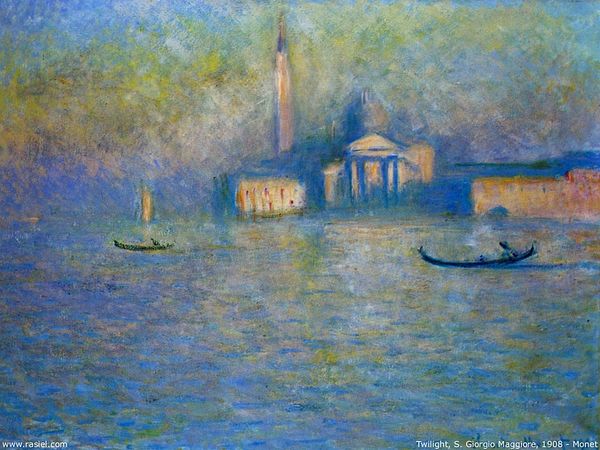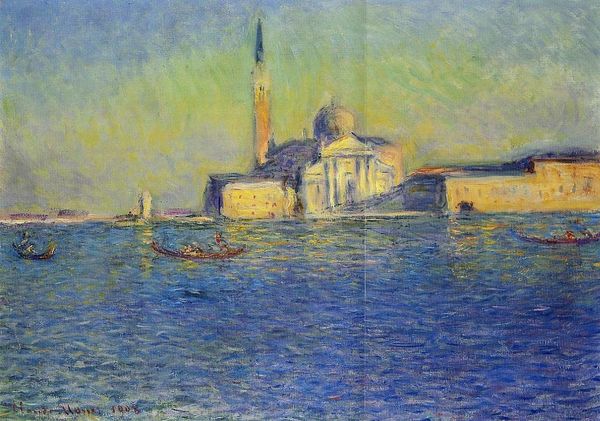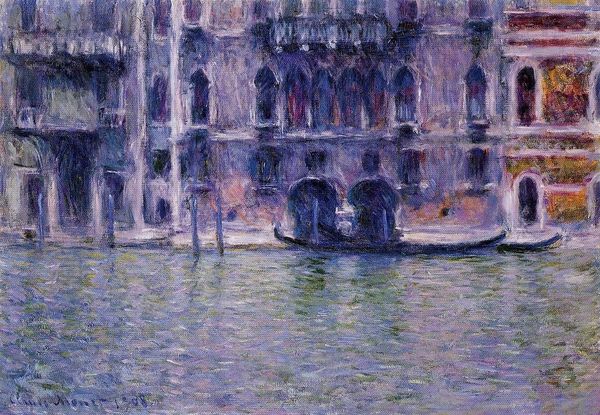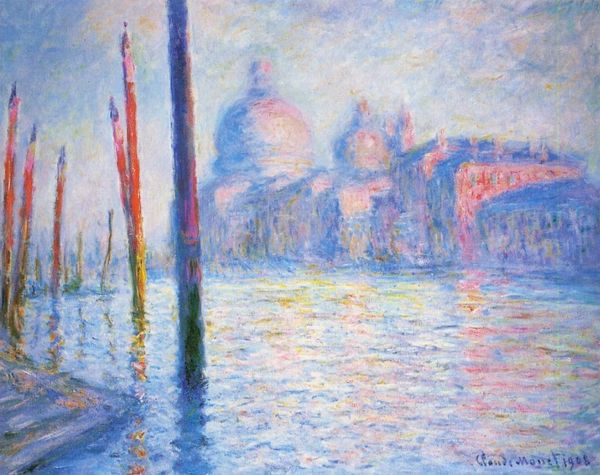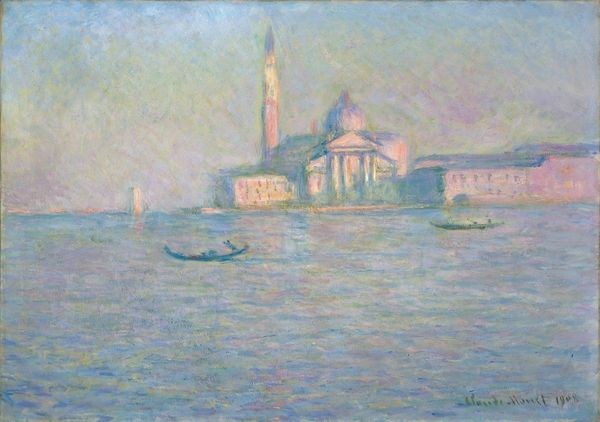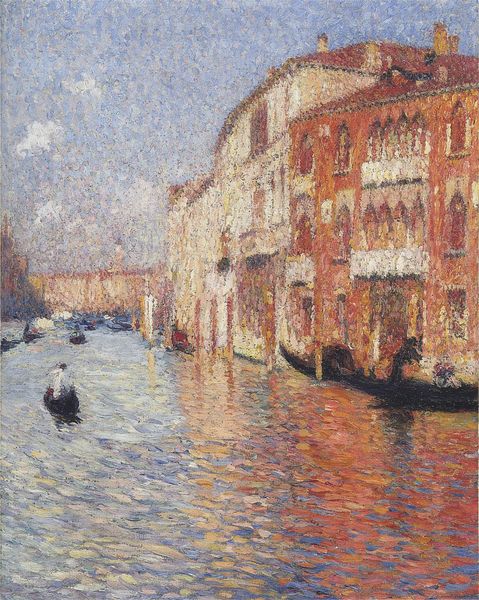
painting, oil-paint
#
venetian-painting
#
baroque
#
painting
#
oil-paint
#
landscape
#
oil painting
#
seascape
#
water
#
cityscape
Copyright: Public domain
Art Historian:Hello! Editor:Hi, welcome to the audio guide. Today we're looking at "View of Salute in Venice," an oil painting by Henri Martin. I'm particularly drawn to the materiality; the way the brushstrokes build up the surface. How would you interpret this work? Art Historian:Indeed. The allure here lies less in any inherent "genius" and more in the materiality, doesn’t it? Consider how Martin painstakingly layered oil paint. Each dab, each stroke signifies labor. How does this visible effort shape your understanding of Venice itself, this representation of a famous place? Editor:It does make me think of the Venetian artisans and laborers who would have built that architecture. Their handiwork too is really obvious still today. Does this speak to a tension between "high" art and craft maybe? Art Historian:Precisely! Traditionally, paintings like these were high art meant for elite consumption, while the labor of artisans went unacknowledged. Here, however, the medium challenges the traditional perception. Look at the scale. This is no modest sketch; it's a large canvas commanding attention. Do you think its size affects its perceived value, it's status as an artwork rather than a "mere" craft? Editor:Absolutely, the scale does lend it importance. So, Martin's technique and the sheer size transform the painting from being a depiction of a landscape into a meditation on labor and value. That's really interesting! Art Historian:Precisely. Reflect on how artmaking is itself a form of production. The canvas, pigments, brushes—each embodies its own history of extraction, manufacture, and commerce. So, through material, process and production we can observe how value and power were materialized. Editor:I’ll never look at a landscape the same way again, especially thinking of all that manual labor!
Comments
No comments
Be the first to comment and join the conversation on the ultimate creative platform.
